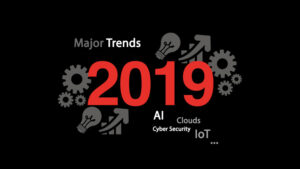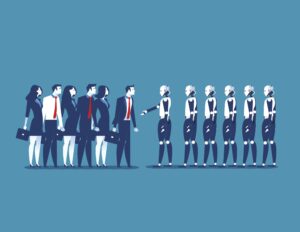
Cybersecurity has been ranked No. 1 of the top 10 megatrends that are expected to shape the security industry in 2019, according to the Security Industry Association(SIA), which compiled the list. IoT and AI are also listed as the top trends to look for next year.
According to SIA, the list is based on survey data generated in September and October from top security industry business leaders, association leadership and key volunteers and speakers for SIA’s Securing New Ground (SNG) conference taking place October 25 to 26 in New York City.
Cybersecurity was identified in the 2019 report as the standout trend shaping the security industry, and rightfully so amid a series of cyber incidents of recent due to backdoors or flaws in security equipment, including IP cameras.

The DDoS attacks against Dyn, resulting in service shutdowns of several famous websites, results from IP cameras and recorders infected with the Mirai virus.
“By nearly 30 percentage points, industry leaders said cybersecurity’s impact on physical security solutions was the most impactful trend they were expecting to face in 2019,” SIA said.
AI is also expected to be a trending technology, which is still at an infancy stage – according to some – yet is exhibiting huge potential due to more advanced algorithms, higher computing power and wider availability of data.

“A resounding number of respondents called for artificial intelligence (AI) to be recognized as a megatrend, noting that AI is becoming vital to supporting the heightened volume of data produced by modern security solutions,” SIA said.
The following are the security megatrends that SIA identified for 2019:
1. Cybersecurity impact on physical security
2. Internet of Things (IoT) and the Big Data effect
3. Cloud computing
4. Workforce development
5. AI
6. Emphasis on data privacy
7. Move to service models
8. Security integrated in smart environments
9. Advanced digital identities
10. Impact of consumer electronics companies
In fact, most of these trends are not new, and a lot of them manifested themselves in the ISC West show held earlier this year. For example, several exhibitors showcased their AI- or deep learning-based algorithms that help facilitate facial recognition, object identification and smart search.
Cloud solutions, another major theme at the show, are certainly picking up, gaining more market acceptance by users who do not have to invest in onsite servers or storage equipment. The “move to service models” trend is closely related to cloud, which allows integrators to offer a service and generate a recurring revenue rather than getting a one-off payment for doing installation once.

As for the other trends, an emphasis on data privacy has gained importance, especially after the EU General Data Protection Regulation took effect. This will force European end users to use security in a way that’s GDPR-compliant, and according to several experts, compliance is a collaborative effort between multiple stakeholders, including vendors, SIs and users.

Today, modern physical security solutions are comprised of IoT devices and sensors that generate high volumes of security data. Applying analytics and artificial intelligence systems makes this data more actionable and increases responsiveness for security systems users.
Cybersecurity continues to be at the top of the list of the most important trends identified by security industry manufacturers, systems integrators, security practitioners, architects and engineers.
Source: a&s Magazine



































































